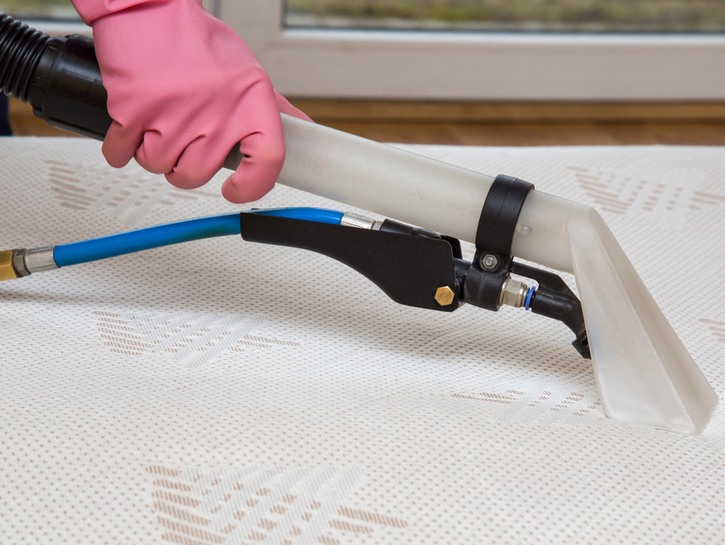You might look at your perfectly made up bed and wonder how the mattress underneath would ever need a cleaning. Between mattress covers, mattress pads, and layers of sheets, it might look like nothing could ever get through all those layers. But if you actually strip off all that padding and linens, you’d be shocked by how filthy your mattress can get after years of use.
Why Should You Clean Your Mattress?
Besides giving you peace of mind for those roughly eight hours a day you spend on your mattress, a clean, well-maintained mattress can last longer and go a long way in preventing potential pest infestations. When you consider all contaminants – like dead skin cells, sweat, pet hair, food crumbs, stains, dust mites and other bugs – your mattress could probably use a good deep cleaning. Most modern mattresses have a proper top and bottom so they can’t be simply rotated or turned over in lieu of cleaning, but follow these steps and you’ll rest easy knowing your mattress isn’t caked with grime.

FotoDuets/Shutterstock
Cleaning Your Mattress
Step 1: Launder The Sheets
Strip the mattress of all linens and padding, and stick those items in the wash. Some washing machines have a “Sanitizing” setting, but otherwise, set your machine to the hottest water and dry on high heat to eliminate all bacteria.
Step 2: Vacuum The Mattress
Once your bedding is in the wash, vacuum the entire mattress with the upholstery attachment on your vacuum cleaner. Make sure to go over the mattress seams and natural crevices where dirt, dust, hair, pet dander, and crumbs are concentrated. For the really hard to reach places, feel free to swap out your vacuum attachment for the shape most suitable for tiny crevices so you can really get in there.
Step 3: Spot Treat Stains
After vacuuming, treat stains with an appropriate cleanser, like an upholstery detergent. (A solution of 1 teaspoon dish soap and 1 cup of warm water can also be effective for stain removal.) Cover the stain with your cleanser, and let it soak in for 30 minutes. Brush the stain away using a cleaning brush, old toothbrush, or dampened cloth, and dry using a hair dryer or fan.
Step 4: Deodorize
Believe it or not, years of sweat and other bodily fluids accumulating in a mattress can cause it to smell (even if you can’t pick up on the odor yourself). Sprinkle baking soda over the mattress, and for best results, leave the powder on the surface overnight for 24 hours. (This is best suited for an occasion where you’re already planning on spending a night or two elsewhere.) Baking soda will also help absorb any leftover moisture from your spot treatments. Ideally, if you’re able to position your mattress near a window, sunlight will help make the disinfecting process more effective.
Step 5: Vacuum Again
Once you’ve given the baking soda some time to work its magic on odors, go over the mattress surface again with your vacuum’s upholstery attachment. Make sure you vacuum as much of it away as possible – especially if you don’t use a mattress pad – so you’re not sleeping on traces of grainy powder.

FotoDuets/Shutterstock
How Often Should You Clean Your Mattress?
Experts recommend you clean your mattress at least twice a year, though checking the mattress label is recommended as different manufacturers may have different instructions for care. Some mattress manuals may also suggest rotating the mattress 180° every six months or so, in order to ensure the mattress materials wear down evenly.
Other Tips
- Buying a mattress cover or mattress pad if you don’t already have one is a great way to create a barrier between your sleeping body and your expensive mattress. Mattress pads also absorb moisture and stains, separate you from dust mites, fleas, and other pests, and are more easily cleaned than a whole mattress if you want to get in the habit of cleaning your bedding more regularly.
- Airing out your mattress or just leaving it near a sunny window every so often can do a lot for reducing bacteria and maintaining the quality of your mattress, especially for those who are busy or are intimidated by the idea of doing a full mattress cleanse.
